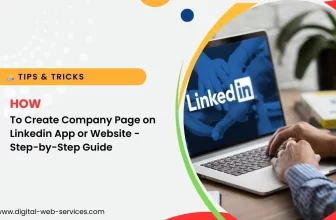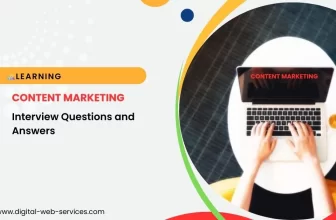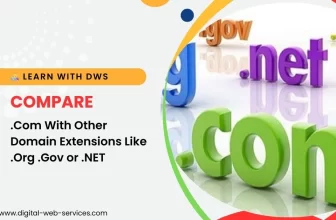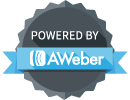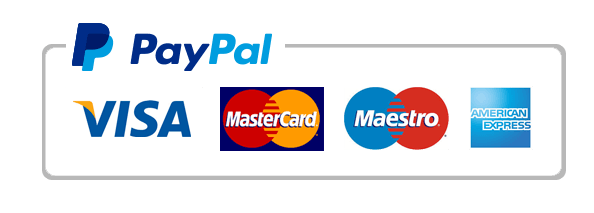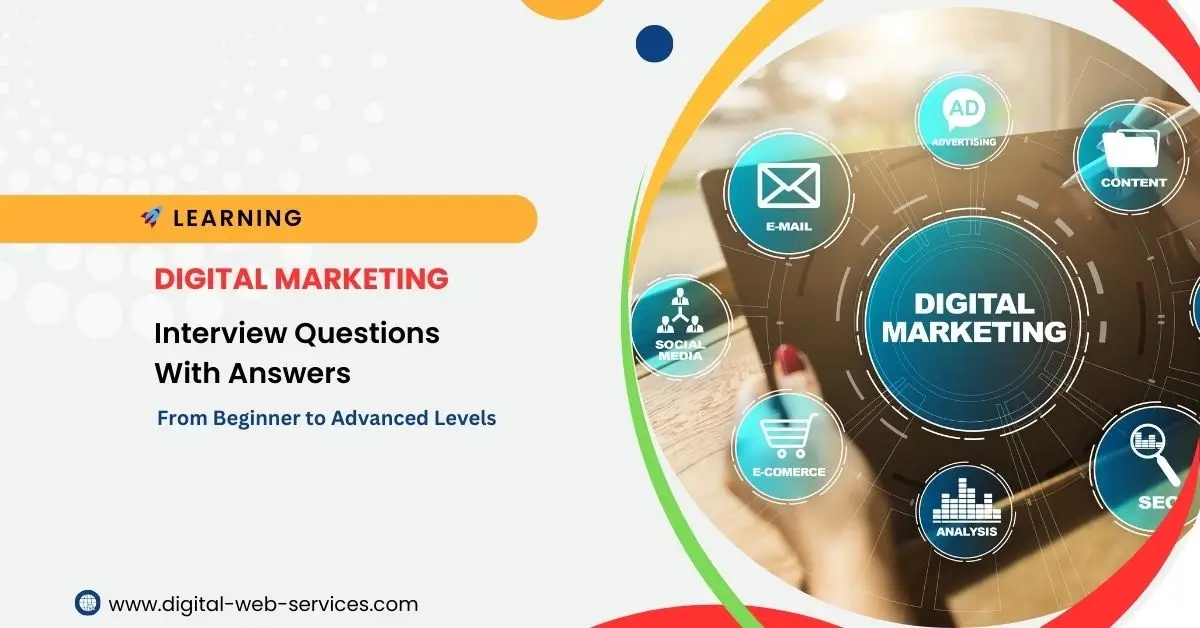
Below are some of the most asked Digital Marketing Interview Questions, ranging from beginner to advanced levels, along with their detailed answers:
Explore The Digital Marketing Interview Questions With Answers
Beginner Level:
1. What is Digital Marketing?
Answer:
Digital Marketing is the use of online channels and platforms such as websites, social media, email, and search engines to promote products or services. It encompasses various techniques such as SEO, PPC, content marketing, and social media marketing to reach and engage with the target audience.
2. What are the key differences between SEO and SEM?
Answer:
- SEO (Search Engine Optimization) refers to the process of optimizing your website to rank higher in organic (non-paid) search engine results. It involves on-page and off-page optimization techniques like keyword research, content creation, link building, etc.
- SEM (Search Engine Marketing) involves paid advertising to increase a website’s visibility on search engine results pages (e.g., Google Ads). While SEO is organic, SEM includes paid efforts like Google AdWords.
3. What is a Bounce Rate?
Answer:
Bounce rate refers to the percentage of visitors who land on a webpage and leave without interacting with it (e.g., clicking links, filling out forms). A high bounce rate might indicate that the page content or user experience isn’t engaging enough.
4. What is Social Media Marketing (SMM)?
Answer:
Social Media Marketing involves using platforms like Facebook, Instagram, Twitter, LinkedIn, etc., to promote a brand, engage with customers, and drive traffic to a website. It includes both organic and paid strategies to increase brand awareness and customer interaction.
5. What is a Call-to-Action (CTA)?
Answer:
A Call-to-Action (CTA) is a prompt that encourages users to take a specific action, such as “Buy Now,” “Sign Up,” “Learn More,” etc. It is often used in digital ads, emails, and on landing pages to drive conversions.
6. What is a Landing Page, and why is it important?
Answer:
A landing page is a standalone web page designed specifically for a marketing or advertising campaign. Its main purpose is to direct visitors towards a single goal or action, such as making a purchase, signing up for a newsletter, or downloading a resource. Landing pages are important because they are focused, designed to increase conversions, and help marketers track the effectiveness of campaigns.
7. What is Email Marketing, and how does it work?
Answer:
Email marketing involves sending targeted emails to a group of people with the goal of driving engagement, conversions, or building a relationship with your audience. It works by segmenting your email list based on user preferences, behaviors, or demographics, and sending personalized content that encourages recipients to take action (e.g., purchase a product, download content).
8. What is a Google AdWords campaign?
Answer:
Google AdWords (now called Google Ads) is a paid advertising platform where businesses create and display ads on Google’s search results page or other Google-affiliated sites. Advertisers bid on specific keywords and pay when users click on their ads (CPC model). Google Ads allows you to target specific demographics, locations, and even time of day to maximize your ad’s effectiveness.
9. What is a “Hashtag,” and why is it used in Social Media Marketing?
Answer:
A hashtag is a word or phrase preceded by the symbol (#) that categorizes content on social media platforms like Twitter, Instagram, or LinkedIn. Hashtags are used to make content discoverable to a broader audience, join trending conversations, and target specific topics or groups.
10. How does Keyword Research influence SEO?
Answer:
Keyword research is the process of finding the right words or phrases that users are typing into search engines to find information, products, or services. These keywords are essential for optimizing website content. By targeting relevant, high-traffic keywords, marketers can improve their chances of ranking higher on search engine results pages (SERPs), which drives more organic traffic.
Intermediate Level:
11. Explain what is Content Marketing and why is it important?
Answer:
Content marketing is the strategy of creating and distributing valuable, relevant, and consistent content to attract, engage, and retain a target audience. It helps build trust with customers, drives traffic, and improves SEO rankings. Successful content marketing leads to higher conversions and customer loyalty.
12. What are the different types of online advertising?
Answer:
The main types of online advertising are:
- Display Ads: Banner or graphic ads placed on websites.
- Search Ads: Text ads that appear on search engine results pages (e.g., Google Ads).
- Social Media Ads: Sponsored content on platforms like Facebook, Instagram, etc.
- Native Ads: Ads that blend seamlessly with the content of a website.
- Video Ads: Advertisements shown on platforms like YouTube.
13. How do you measure the success of a digital marketing campaign?
Answer:
Success is typically measured using key metrics like:
- Traffic (Website Visits)
- Engagement (Social Media Likes, Shares, Comments)
- CTR (Click-Through Rate)
- Conversion Rate
- ROI (Return on Investment)
- Bounce Rate
- Lead Generation and Sales
These metrics help gauge how well a campaign is performing in meeting business objectives.
14. What is Google Analytics, and why is it important?
Answer:
Google Analytics is a free web analytics tool that tracks and reports website traffic, user behavior, and other key performance metrics. It helps marketers understand how visitors interact with their site, identify areas for improvement, and make data-driven decisions for optimization.
15. What is the difference between organic and paid traffic?
Answer:
- Organic Traffic: Visitors who come to your website via unpaid search results, social media shares, or referrals.
- Paid Traffic: Visitors who come to your website through paid advertisements, such as Google Ads or Facebook Ads.
16. What is Local SEO, and why is it important for small businesses?
Answer:
Local SEO is the practice of optimizing your website to rank well for location-based searches. It focuses on improving visibility in Google Maps and local search results. It’s important for small businesses because it helps attract local customers who are more likely to visit or buy from businesses in their vicinity.
17. What is the role of Influencer Marketing in digital marketing campaigns?
Answer:
Influencer marketing involves partnering with individuals who have a significant following and influence over a target audience, typically on social media platforms. Influencers help promote products or services to their followers in an authentic and engaging manner. It’s effective because influencers can boost brand awareness, credibility, and trust among their followers.
18. What are the different types of content used in digital marketing?
Answer:
Some common types of content used in digital marketing include:
- Blog Posts/Articles: Written content to educate or inform the audience.
- Videos: Engaging and shareable content that can be used on websites, YouTube, or social media.
- Infographics: Visual content that simplifies complex information and data.
- Ebooks/Whitepapers: In-depth written resources, often used for lead generation.
- Podcasts: Audio content used to build engagement and provide value to listeners.
- Social Media Posts: Short, engaging content designed for sharing and interaction.
19. What is a Marketing Funnel?
Answer:
A marketing funnel represents the stages a potential customer goes through before making a purchase. These stages are typically:
- Awareness: The customer becomes aware of the brand/product.
- Interest: The customer shows interest and seeks more information.
- Consideration: The customer compares options and evaluates benefits.
- Intent: The customer is ready to make a purchase decision.
- Purchase: The customer completes the purchase or conversion.
The goal of digital marketers is to move prospects through each stage with targeted content and offers.
20. What are “Buyer Personas” in digital marketing?
Answer:
Buyer personas are semi-fictional representations of an ideal customer based on data and research. They include demographics, behaviors, goals, challenges, and purchasing motivations. By understanding buyer personas, digital marketers can tailor their strategies to resonate more effectively with their target audience, improving engagement and conversion rates.
Advanced Level:
21. What are the key components of a successful SEO strategy?
Answer:
A successful SEO strategy involves several components:
- Keyword Research: Identifying the keywords your audience is searching for.
- On-Page SEO: Optimizing individual web pages, including meta tags, headings, content, and URLs.
- Off-Page SEO: Building backlinks from reputable websites to improve domain authority.
- Technical SEO: Optimizing the website’s backend, including site speed, mobile-friendliness, and crawlability.
- Content Marketing: Creating high-quality, valuable content that addresses user intent.
- User Experience (UX): Ensuring a seamless and positive experience for visitors.
22. What is Programmatic Advertising?
Answer:
Programmatic advertising refers to the automated process of buying and placing digital ads using software and algorithms. It allows advertisers to target audiences with precision in real-time, optimizing ad placements based on user data, demographics, and behavior.
23. Can you explain the concept of “Attribution Models” in Digital Marketing?
Answer:
Attribution models are used to determine how credit for a conversion is assigned to various touchpoints in the customer journey. Common models include:
- First-Click Attribution: Gives full credit to the first touchpoint.
- Last-Click Attribution: Assigns all credit to the final touchpoint.
- Linear Attribution: Distributes credit evenly across all touchpoints.
- Time-Decay Attribution: Gives more credit to touchpoints closer to the conversion.
- Position-Based Attribution: Assigns 40% credit to the first and last touchpoints, with the remaining 20% distributed evenly across the middle interactions.
24. What is the difference between CPC, CPM, and CPA in paid advertising?
Answer:
- CPC (Cost-Per-Click): Advertisers pay each time a user clicks on their ad.
- CPM (Cost-Per-Mille): Advertisers pay per 1,000 impressions, regardless of clicks.
- CPA (Cost-Per-Action): Advertisers pay when a user completes a specific action, such as a purchase or form submission.
25. How does remarketing/retargeting work in digital marketing?
Answer:
Remarketing/retargeting involves targeting users who have previously interacted with your website or ads but did not convert. Through the use of cookies or pixels, advertisers can show targeted ads to these users as they browse other websites or social media platforms, encouraging them to return and complete the desired action.
26. How would you approach creating a digital marketing strategy for a new product?
Answer:
Creating a digital marketing strategy for a new product involves:
- Market Research: Understand the target audience, competitors, and market trends.
- Goal Setting: Define clear objectives, such as brand awareness, lead generation, or sales.
- Channel Selection: Choose the appropriate digital channels (social media, email, search engines, etc.).
- Content Creation: Develop engaging content tailored to your audience’s needs and preferences.
- Campaign Execution: Run targeted ads, SEO efforts, and social media campaigns.
- Measurement and Optimization: Use analytics to track performance and refine strategies based on data.
27. What is the role of artificial intelligence (AI) in digital marketing?
Answer:
AI plays a significant role in digital marketing by automating processes, personalizing content, and improving customer experiences. AI tools can analyze large datasets to predict consumer behavior, optimize ad targeting, create dynamic content, and deliver chatbots for real-time customer service.
28. Explain the concept of “Content Distribution.”
Answer:
Content distribution is the process of promoting content across various channels to increase its reach and visibility. This includes owned channels (e.g., website, email), earned channels (e.g., press coverage, social media mentions), and paid channels (e.g., PPC, sponsored posts). Effective distribution ensures that content reaches the right audience and drives desired outcomes, such as traffic, leads, or sales.
29. What is the role of Artificial Intelligence (AI) in Digital Marketing?
Answer:
AI in digital marketing automates and optimizes various tasks such as personalization, predictive analysis, and customer insights. AI tools can analyze vast amounts of data to identify trends, preferences, and behaviors, enabling marketers to create more personalized experiences. It can also optimize ad targeting, improve chatbots for customer service, and recommend content based on user behavior.
30. What are some key factors for a successful paid advertising campaign?
Answer:
Key factors for a successful paid advertising campaign include:
- Targeting: Precisely targeting the right audience based on demographics, behaviors, or interests.
- Ad Copy & Design: Creating compelling and clear ad copy along with engaging visuals.
- Landing Page Optimization: Ensuring the landing page is relevant, fast, and optimized for conversions.
- Budget Management: Efficiently allocating the budget to maximize ROI without overspending.
- A/B Testing: Continuously testing and optimizing ads, headlines, and targeting for better performance.
- Conversion Tracking: Setting up proper tracking to measure campaign success and make adjustments.
31. How do you improve a website’s user experience (UX)?
Answer:
To improve UX, consider the following strategies:
- Site Speed: Optimize page load times to prevent visitors from leaving.
- Mobile Optimization: Ensure your website is fully responsive and works seamlessly across devices.
- Intuitive Navigation: Design clear and easy-to-use menus, helping users find what they need quickly.
- Clear Calls-to-Action (CTAs): Place compelling CTAs that guide users toward desired actions.
- Visual Hierarchy: Use design elements like colors, fonts, and images to direct attention to important content.
- User Testing: Regularly conduct user testing to understand pain points and improve usability.
32. What is the importance of using Retargeting Ads in a Digital Marketing Campaign?
Answer:
Retargeting (or remarketing) ads are essential because they target users who have previously interacted with your website or ads but did not complete a desired action, such as making a purchase or signing up for a newsletter. Retargeting keeps your brand in front of users, reminding them to return and convert, ultimately increasing your chances of a successful conversion.
33. What is the difference between Organic and Paid Search Results?
Answer:
- Organic Search Results are listings on search engine results pages (SERPs) that are earned through SEO efforts. These results appear naturally based on the relevance and quality of content, backlinks, and other SEO factors.
- Paid Search Results are ads that appear at the top or bottom of SERPs, where advertisers pay for each click (CPC model). These results are influenced by bidding on keywords and the quality of the ad.
34. What is the importance of “Personalization” in digital marketing?
Answer:
Personalization involves tailoring content, messages, and offers to individual users based on their behavior, preferences, and demographic data. It increases the relevance of the message, leading to higher engagement, better user experience, and increased conversions. Examples include personalized email campaigns, product recommendations, and dynamic website content.
35. How do you optimize a website for mobile devices?
Answer:
Optimizing a website for mobile devices involves:
- Responsive Design: Ensuring the website layout adjusts to different screen sizes.
- Faster Load Times: Compressing images, using caching, and optimizing code to reduce load times.
- Touchscreen Optimization: Designing buttons and navigation that are easy to interact with on mobile screens.
- Mobile-Friendly Content: Using clear, concise, and readable text with appropriately sized fonts and headings.
Conclusion
These additional questions cover more advanced concepts and offer insights into how digital marketing strategies are applied in real-world scenarios. Whether you’re a beginner or an expert, understanding these topics can help you confidently approach your digital marketing interview.
Digital Web Services (DWS) is a leading IT company specializing in Software Development, Web Application Development, Website Designing, and Digital Marketing. Here are providing all kinds of services and solutions for the digital transformation of any business and website.




